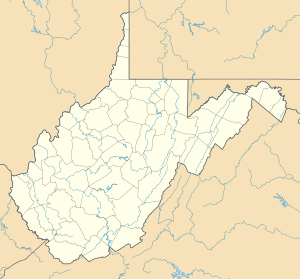This article includes a list of references, related reading or external links, but its sources remain unclear because it lacks inline citations .(December 2012) (Learn how and when to remove this template message) |
| Guthrie Air Force Station | |
|---|---|
| Part of Air Defense Command (ADC) | |
| Coordinates | 38°26′35″N081°40′50″W / 38.44306°N 81.68056°W Coordinates: 38°26′35″N081°40′50″W / 38.44306°N 81.68056°W |
| Type | Air Force Station |
| Code | ADC ID: P-43, NORAD ID: Z-43 |
| Site information | |
| Controlled by | |
| Site history | |
| Built | 1951 |
| In use | 1951-1968 |
| Garrison information | |
| Garrison | 783d Aircraft Control and Warning (later Radar) Squadron |
Guthrie Air Force Station is a closed United States Air Force General Surveillance Radar station. It is located 5.3 miles (8.5 km) north-northeast of South Charleston, West Virginia. It was closed in 1968.

The United States Air Force (USAF) is the aerial and space warfare service branch of the United States Armed Forces. It is one of the five branches of the United States Armed Forces, and one of the seven American uniformed services. Initially formed as a part of the United States Army on 1 August 1907, the USAF was established as a separate branch of the U.S. Armed Forces on 18 September 1947 with the passing of the National Security Act of 1947. It is the youngest branch of the U.S. Armed Forces, and the fourth in order of precedence. The USAF is the largest and most technologically advanced air force in the world. The Air Force articulates its core missions as air and space superiority, global integrated intelligence, surveillance, and reconnaissance, rapid global mobility, global strike, and command and control.

South Charleston is a city in Kanawha County, West Virginia, United States The population was 13,450 at the 2010 census. South Charleston was established in 1906, but not incorporated until 1917.




